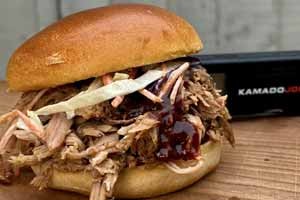Easy, tender BBQ pulled pork, loaded into buns with coleslaw and BBQ sauce.
Focaccia Barese
Enjoy the authentic flavours of Puglia with this Focaccia Barese recipe by chef Mike Tomkins. Hailing from the heart of Bari, Italy, Focaccia Barese is a cherished culinary tradition known for its simple yet delicious ingredients and rustic charm.
Learn how to create golden, fluffy focaccia topped with olives, tomatoes and rich olive oil. What sets this recipe apart is its attention to detail, including precise dough and bread temperatures, ensuring the perfect texture every time.
Whether enjoyed as a snack or paired with your favourite meal, Focaccia Barese is sure to bring a taste of Italian countryside to your table.
Focaccia barese recipe
Dough ingredients
- 210g baked maris piper potatoes
- 360g bread flour
- 285g fine semolina
- 15g granulated sugar
- 2g active dry yeast
- 470 ml water at around 30-35 °C
- 50g extra virgin olive oil
- 10g fine sea salt
Toppings
- 65g extra virgin olive oil
- 65g water at 32 °C
- Cherry tomatoes, sliced in half
- Pitted olives, sliced in half
- Maldon sea salt flakes
Method
- Add your potatoes to a large oven dish with plenty of salt and a little olive oil. Bake at 220 °C until you can easily slide a knife through them.
- Use a potato ricer or a sieve to scoop out 210g of the potato flesh. Set to one side and discard the skins.
- Combine your flour, semolina, sugar, olive oil and active dry yeast in a stand mixer. On a low speed, begin slowly drizzling in your water in one continuous stream.
- Add your potatoes and continue to mix for a further 20 minutes.
- Place the dough in an oiled bowl and fold in on itself to create a smooth ball. Then cover in cling film and pop in a warm spot (18 °C+) for around 4-6 hours. Crucially, you need your dough’s temperature to read between 25-27 °C. At this point, pop it in the fridge overnight.
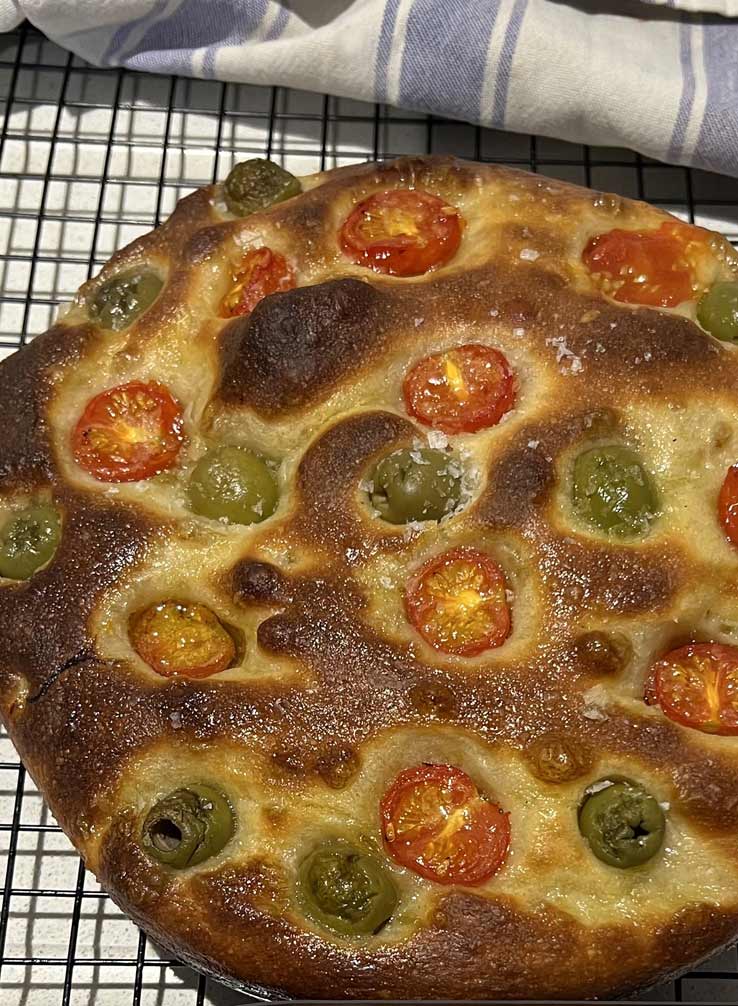
- When you remove the dough from the fridge, check the internal temperature, and you’ll see you’re down to 4-5 °C. Now we need to get that temperature back up to 25-27 °C for the second proof. I like to do this in the dishes I plan to bake in, so make sure they’re nonstick and oiled well. Divide your dough into portions based on your baking dishes and cover with cling film before moving to your warm spot — remember, the larger the dish, the longer it's going to take your dough to reach the desired temperature.
- Check your dough regularly. When your dough is around the 20 °C mark, we’re going to dimple our dough and then add our tomatoes and olives before allowing the temperature to continue to rise to 25-27 °C.
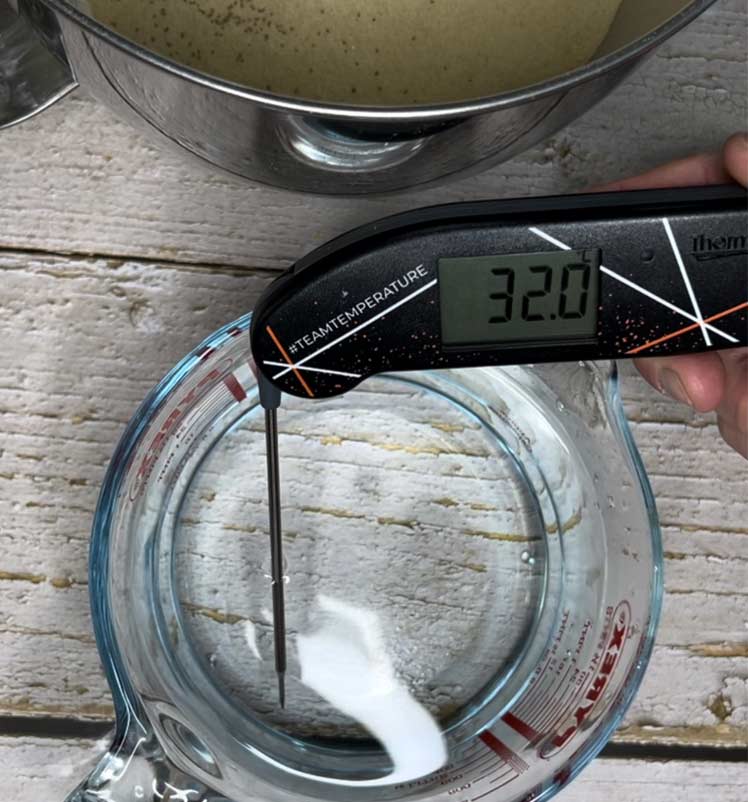
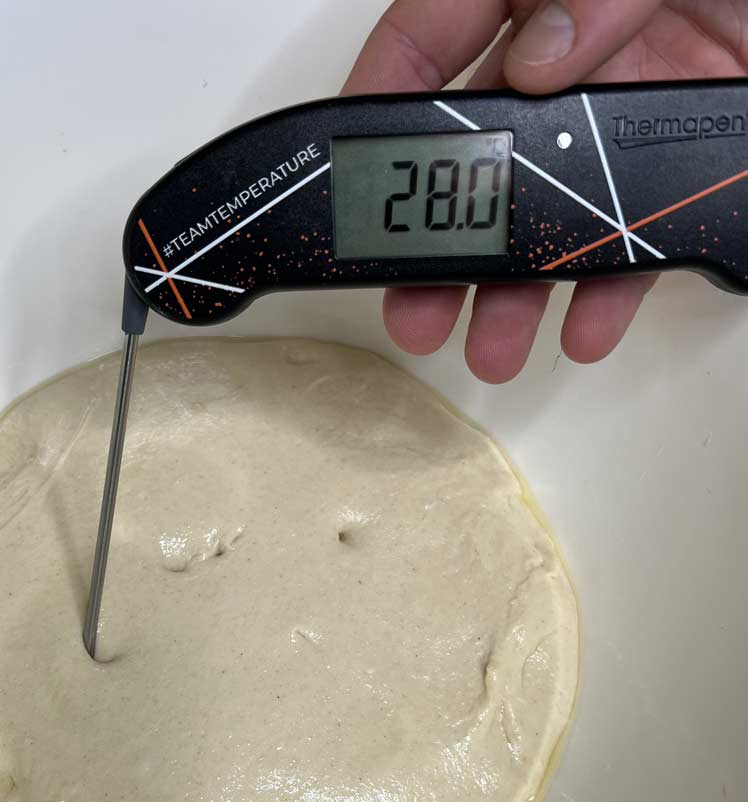
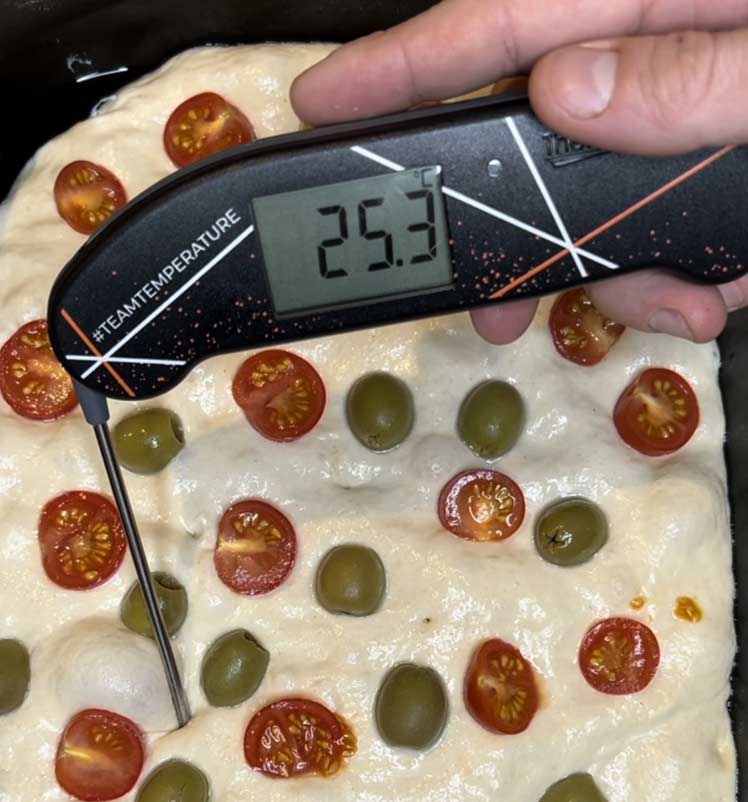
- At this point, preheat your oven to 210 °C and whisk together your olive oil and water for the topping.
- Spread the olive oil and water mixture over the top of the dough and place it in your oven.
- Cook until the internal temperature reads 98 °C and then remove from the oven. Drizzle with some more olive oil and finish with flakey Maldon sea salt.
- Remove from the baking tin and allow to cool completely before cutting into your bread to reveal its spongy, airy centre!
"Thermapen is one of those kitchen tools I can't live without - it's something I use every single day from making sauces, to bbq cooking, to private dining and events, it comes with me everywhere! A Thermapen will improve you as a chef and a cook by taking the guess work out of complex cooking."
Related posts
 Christmas Tree Pavlova
Christmas Tree Pavlova
 Swedish Cinnamon Buns
Swedish Cinnamon Buns
 Italian Meringue with Baked Apricots & Hazelnut Cream
Italian Meringue with Baked Apricots & Hazelnut Cream
 Quick & Easy Christmas Pudding
Quick & Easy Christmas Pudding
 Christmas-Spiced Orange Meringue Pie
Christmas-Spiced Orange Meringue Pie
Search
Categories
- Baking (35)
- BBQ (85)
- Autumn (14)
- Cheap Eats (9)
- Sweet Treats (38)
- Tips, Advice & Info (78)
- Christmas (36)
- Drinks (2)
- Thermapen Father's Day Recipes (18)
- Team Temperature (28)
- Date Night (37)
- Celebrations (20)
- Family & Kids (10)
- Fish (21)
- Low & Slow (13)
- Meat (142) click
-
Chefs (132)
click
- Kenny Tutt (16)
- Richard Holden (16)
- Barbechoo (7)
- Only Slaggin (1)
- SoSaSe Chocolat (1)
- Genevieve Taylor (5)
- Becky Excell (2)
- Charlotte Stirling-Reed (3)
- The Smokin Elk (13)
- Marcus Bawdon (2)
- Thermapen Chef (25)
- Edd Kimber (2)
- Humble Plates (7)
- Simon May (4)
- The Hedgecombers (3)
- Billy & Jack (4)
- Perfectly Preserved (3)
- Mike Tomkins (20)
- DJ BBQ (2)
- Nick Nairn (4)
- BBQ Jake (1)
- Air Fryer (9)
- RFX (6)
Latest recipes
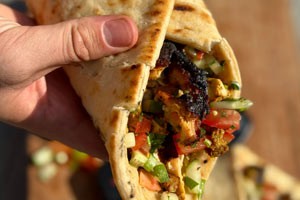
Rotisserie-cooked chicken shawarma, coated in a punchy yoghurt marinade. Pile into flatbreads with salad
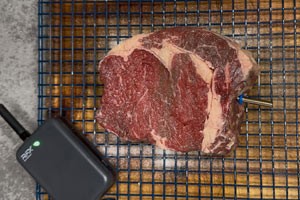
Ribeye is an amazing, flavour-packed cut of beef. Learn how to cook ribeye steak medium rare using the reverse sear...

Elky Whittaker, aka The Smokin’ Elk, began barbecuing as a hobby 10 years ago. Today, he has 262k Instagram followers...
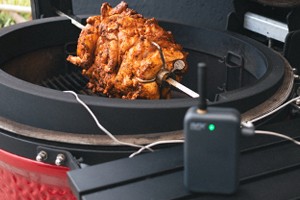
Juicy BBQ chicken shawarma recipe with homemade flatbreads and garlic sauce.
Archive
Popular Recipes
